The Aesthete & the Amateur: Arguing Abstraction by Eleanor Medier
by Eleanor Medier, edited by Heavy Writer
(Please see the in-world release or download Sim Street Journal #3 for more photographs, articles, and functionality. Also available on MARKETPLACE).
An ongoing series of discussions between an unlikely fictitious couple—a professional art critic and her wise fool truck-driver husband, continuing from the last installment.
—————————————————————————————————–
Sometimes good taste and money go together. Since gaining a reputation as an art critic, I enjoy my new budget for acquiring classic works. Eager to fill the walls in my home with favorite masterpieces, I also need some controversy—a personal quest. To convince Heavy, my verbose and visually naive husband, of the virtues in abstract art, will help him comprehend more contemporary pieces. If I can show him that Josef Albers is the height of sophistication and sensitivity, I will succeed.
What works can be simpler? Even though these images were not created in Second Life®, I can buy them and live with them here, which I can’t in real life. This is a virtual world advantage. I can have any art that I want. So, shaking up Heavy is too fun to resist.
Waiting for when he is not around, I hurry, wallet in hand, to the leading blue-chip 20th Century gallery (I best not name them because I get amazing deals they don’t want you to get).
Admittedly, the 1950’s decade is one of my favorites. Everything seemed defined then—sorry Impressionists.
Ah hah! I find exactly what I seek: the series “Homage to a Square” by Josef Albers. He did a lot of these—in every conceivable color—so those with preferences are sure to find a configuration to fit any decor. Such fundamental expressions, they seem a base for any visual education—in-world or out!
Though I am unbiased, I still have my favorite palette—especially for home—the cool tones. Selecting four from Albers’ series that embrace blues and greens so great to live with, I also grab a few of Albers’ early ink drawings. They show the base from which he kept simplifying—as if searching but not yet finding. Once he formed squares-within-squares, he met his stride. Most of these compositions have four nested squares, with a sense of gravity.
Gravity isn’t helping me too much though. The crate of paintings won’t fit into my mercedes. Finally tying the trunk hood over the box using the shoulder strap from my brief case (I cross my fingers that it holds), I avoid the expressways and arrive home without incident. It is going to be hard to sneak these into the house. But I just can’t wait to see Heavy’s expression when our living room sprouts squares! This will be worth the effort!
Heavy’s mustang is still gone. This must be a good fishing day, so he will be in a good mood. I back my car into the garage where I can negotiate these acquisitions inside more easily.
This needs a dramatic presentation—the art is dynamic!! I can debate whether these paintings are better individually, or as a group. But first, I move the furniture and get them up on the walls. Now I wait for Heavy to come home. The sun is just starting to set, so it should be any minute.
The door opens, and I exclaim: “Heavy dear!!! You had a good day?” I hand him a glass of my best wine. He will need it.
He takes the glass, but his eyes are glued to the paintings. As if sleepwalking, he slowly approaches them, and says nothing. This is not the reaction I expect! So I open: “Dear, if we are going to review gallery shows together, we must discuss abstraction. So, this is a good place to start.”
He looks at me, confused: “These tiles would look better in the kitchen, dear.”
For a moment, I don’t know what to say! “Dear, these are paintings by Josef Albers from 1956.”
Heavy: “This is a joke, right? These are just squares, dear. There is nothing here to see.”
Eleanor: “This is minimal art—it explores the essence of form and color. It is precisely simple so we can experience the active color interactions. You don’t care for abstract art because you don’t know how to see it.”
Heavy: “Abstraction is just fog, lights, shadow, shapes—it hides from making a real statement. Defining forms can tell more—can express entire ideas. Now seriously, we can’t have these in the living room. Where are the Hopper paintings you got last week?”
Heavy is a master at changing subjects. I must keep to the quest: “As critics, if we only talk about work that we like, what is the point? We learn as much from what we don’t understand as what we do. Albers was a genius of simplicity.”
Heavy: “Sweetheart, are you certain he was not drunk or crazy?”
Eleanor: “Most artists are crazy—that comes with the territory. Obviously, he can still be controversial for you to react this way. These paintings express the essence of color—the feelings they convey, and the atmosphere they form. Albers was such a purist that if he could have used color without form, he would have. Can’t you look past the squares?”
Heavy: “Come on. If I make 1,000 squares and use different colors, I will make a couple of good ones by accident. Even a seven-year-old kid can.”
Eleanor: “Sure, you can draw a square, or even two. But do you know what to do with them? What colors would you choose? Without understanding color, you can’t know which work, and which don’t. Does a seven-year-old kid understand simultaneous contrast??”
Heavy: “Whatever that means. Is it like using the same color in different tones?”
Eleanor: “No. It is how the colors react visually to one another. The most simple example is if you place a black square and a white square—each the same size—on a grey background. The white square will look larger than the black one. It an optical illusion—a tension—a visual movement.”
Heavy: “It makes your head spin! These are fancy words, sweetheart. You can have color contrast in a genuine work of art. You don`t need squares to explain physical phenomenon.”
Eleanor: “You do if you want to express it in its purest form.”
Heavy: “Draw a square to explain that—but it won’t be art, it will be a teaching board. I bet Albers gave free drinks to art critics and they made him an artist. It is like Angelina Jolie painting. Then a notorious art critic will write about the vibrance, the atmosphere, the ambiance, the logic of colors, and other shit like that in the work of this new great talent. And that’s it. The rest is management and promotion. It gets better if another notorious critic will say the work of this painter is shit, because then they can all claim his art has a controversial originality. Albers probably laughed at the stupid critics.”
Eleanor: “Actually, Albers taught at the Bauhaus—a school of modern art in Germany before World War II, and then it moved to Chicago—and made me want to be an artist. He did a lot with a little. Albers worked with the Bauhaus concept ‘less is more.’”
Heavy: “That can work in architecture. I just don’t buy that a square is art.”
Eleanor: “Albers changed the way people viewed color and composition.”
Heavy: “That`s just a story to cover him. Minimalism is art for snobs. I’m a fair critic. I see a square and nobody can convince me it is a circle.People who draw a point on a blank page and call it art—that I don’t want to see. You know well if we will have a napkin with, let’s say, a Matisse signature on it, we can sell that for big money—even if he just drew a few lines because he was bored while in a french restaurant.”
Eleanor: “He knew what he was doing. Look at these earlier ink drawings. ”
Heavy: “As long there are no squares, I might like them.”
Eleanor: “No squares —nice rectangles, cool rectangles, fun rectangles!”
Heavy: “Haaaa—so he evolved from more than four angles? Yeah, very interesting. Isn’t art supposed to be for people to understand? I thought we agreed art should communicate.”
Eleanor: “We do agree on that. I think Albers communicates. Art is partially to make you question, to make you think about something in a new way.”
Heavy: “What questions might you ask when you stare at squares?”
Eleanor: “They are very meditative. And he is still gets reactions—positive and negative—you won’t forget these.”
Heavy: “I want symbols and meaning.”
Eleanor: “Something simple can symbolize something complex. Consider music with and without lyrics. I think abstract art is like music without words. I can feel just the image itself. Every one will see something different. Abstraction allows for more interpretations.”
Heavy: “That is a waste of time. You can come up with all kinds of stories.”
Eleanor: “I don’t have to see real shapes, or a literal story. I think there is a place for something just visual.”
Heavy: “Yes—if you design wallpaper. It doesn’t have to tell a story—it just has to be relaxing for the eyes and create nice environment. From art exposed in a gallery or museum, I request more than just being nice for the eyes. What`s wrong with art being visual and telling a story?Put a good story behind a painting, and it will sell.”
Eleanor: “Not all expressions can be made in a story form. I can say the squares are inspired by technology or whatever, but it is color that has personality. Albers adds dimension, interest, and brightness to a room.”
Heavy: “An art critic said Albers is revolutionary—and this is how you get to be a master. Sell simple squares for big dollars.”
Eleanor: “It is a good strategy to be controversial if you want to be famous.”
Heavy: “OK, I got the point. You can take these paintings back to where you got them. No one can convince me that what I don’t like is beautiful. How can a smart person like you, who loves art like you do, believe Albers is revolutionary? Art critics and historians cover for each other!”
Eleanor: “Look, we spend more time talking about Albers whom you hate than about artists that you love! I think you love to hate him!”
I sigh and gaze at the paintings with longing. They are so sublime, so elegant. They pull at my heart strings in their honest frankness—they try to be nothing but what they are. Feelings on canvas. Thoughts without words. Dimensional, ethereal, emotional. I just wish Heavy could see that. Well, let’s see if it helps with my next assignment.
——————-
After reviewing a trio of 3D installations (‘When the Mind’s Eye Listens’ by Nino Vichan, ‘Rust’ by Cica Ghost, and ‘Ascension’ by Mantis Oh), we arrive home. I am exhausted, but Heavy is on a roll: “Good art everybody appreciates—expert or not.”
I can’t let a comment like that go: ”Does that mean art is democratic?? That you can take 100 people, and the majority will be right on what is great art??”
Heavy: “I didn’t say that. Don’t twist my words. Do you think there is anyone who will not like a painting by Cezanne, for example? If there is someone who doesn’t like Cezzane, there’s no hope for that person. lol”
I grab my words back to untwist them: “There are a lot of people who do not like Cezanne. People who love realism only or who think he was sloppy.”
Heavy: “Probably Albers didn’t. lol”
Eleanor: “Albers loved Cezanne—he called him the ‘father of modern art.’ Well, he wasn’t the first to call Cezanne that.”
Heavy: “Forget Cezanne. How about a statue by Michaelangelo?”
Eleanor: “Everyone loves that.”
Heavy: “We agree. Also there is art you may not really like but can still appreciate.”
I smile at this ray of hope: “Most people can’t look past what they do not personally like. Usually only a professional can.”
Heavy: “I recall a Rembrandt painting of a butchered cow—just dead meat. There is nothing to like in that image.”
Eleanor: “You don’t think dead meat can be art?”
Heavy: “But you can appreciate how it is ugly but sublime. I don’t like the Dutch School much.”
Eleanor: “I love Northern Renaissance! They captured a sense of every day, inventing the technique of chiaroscuro.”
Heavy: “Yes, but there is a dark side. It gives me angst.”
Eleanor: “There is a contrast—a scene that seems normal, but is also very dramatic at the same time. It is successful if it makes us see in a new way, like Albers does
••••••••••••••••••••••••••CONTINUED IN PART 2
This series has continued from the previous issue as Eleanor and Heavy continue to make their way through the virtual cultural landscape.
From Sim Street Journal: Issue #3 • Please click here to see contents.
(Please see the in-world release or download Sim Street Journal #3 for more photographs, articles, and functionality. Also available on MARKETPLACE).
PLEASE SEE SPONSORS FOR SIM STREET JOURNAL ISSUE #3
Contributions are encouraged if covering topics relevant to the real world readers.
Comments and opinions are also encouraged.
– – – – – – – – – – – – – CONTACTS:
Sim Street Journal explores the relevance of virtual to real commerce and culture.
ONLINE: https://simstreetjournal.wordpress.com/
FACEBOOK: https://www.facebook.com/simstreetjournal
IN-WORLD: http://maps.secondlife.com/secondlife/Innu/40/36/1650
MARKETPLACE: https://marketplace.secondlife.com/stores/148961
EMAIL: simstreetjournal@gmail.com
The Sim Street Journal explores the relevance of second to first life.
© 2014 by Eleanor Medier, Sim Street Journal. Articles cannot be reprinted without permission.

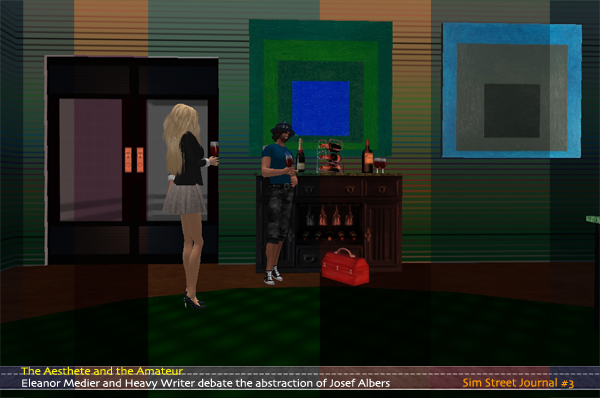
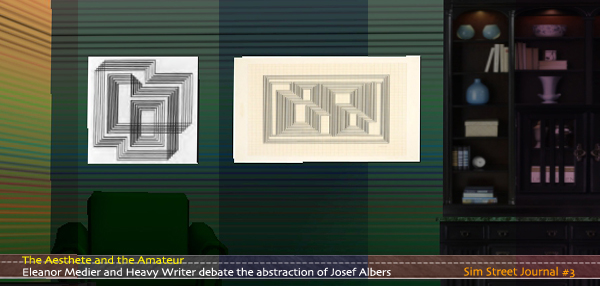
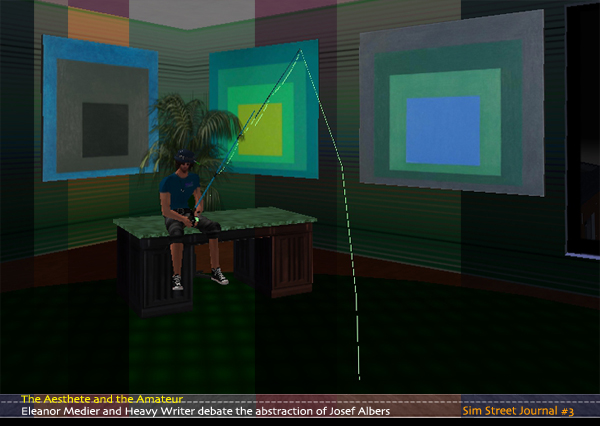
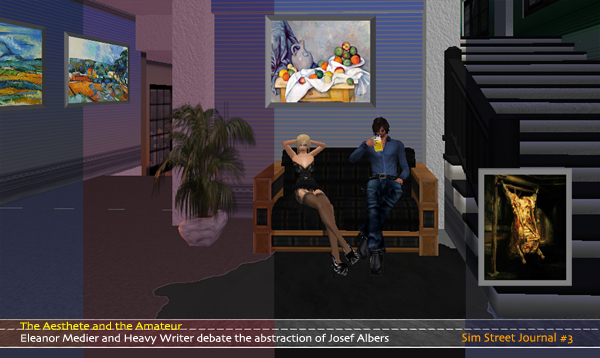
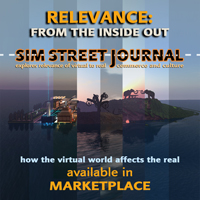
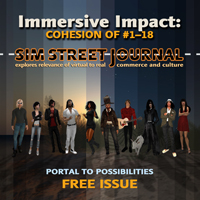






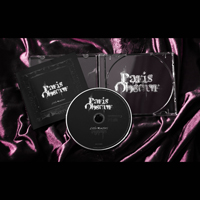

Pingback: Magicians of Meaning | Sim Street Journal
Pingback: Telling Stories | Sim Street Journal
Pingback: Champions of Expression | Sim Street Journal
Pingback: Luck Created | Sim Street Journal